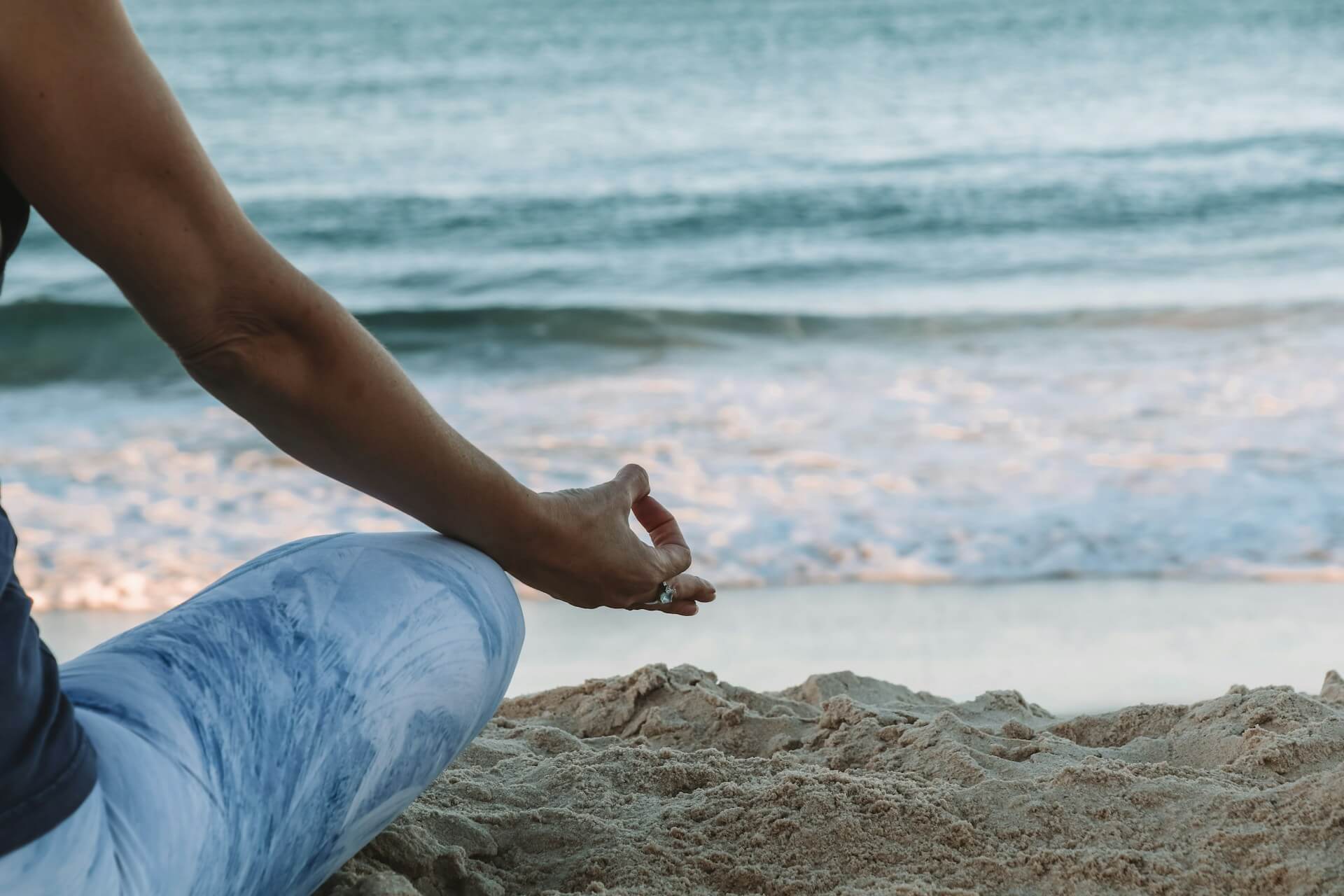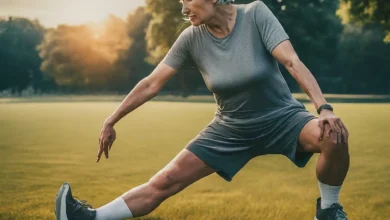Yoga for Seniors: Flexibility, Strength, and Balance

Introduction: Embracing Yoga in Your Golden Years
Yoga isn’t just for the young and flexible. It’s a powerful tool for seniors looking to improve their overall health and well-being. In this article, we’ll explore how yoga can enhance flexibility, strength, and balance for older adults, focusing on safe and effective practices tailored to your needs.
As we age, our bodies change, and so should our approach to exercise. Yoga offers a gentle yet effective way to stay active, reduce the risk of injuries, and maintain independence. By adapting traditional poses and techniques, seniors can reap the many benefits of this ancient practice.
The Golden Benefits of Yoga for Seniors
Yoga isn’t just about touching your toes or standing on your head. For seniors, it offers a wide range of benefits that can significantly improve quality of life:
- Improved flexibility: Gentle stretching helps maintain joint mobility and muscle elasticity.
- Increased strength: Many poses use body weight to build muscle strength.
- Enhanced balance and stability: Regular practice improves coordination and reduces fall risk.
- Better posture: Yoga helps correct years of poor posture habits.
- Reduced risk of falls: Improved balance and strength lead to fewer accidents.
- Stress relief and mental well-being: Yoga’s meditative aspects promote relaxation and mental clarity.
These benefits make yoga an ideal exercise choice for older adults looking to maintain their health and independence.
Getting Started with Yoga as a Senior
Beginning a yoga practice in your later years might seem daunting, but with the right approach, it can be safe and enjoyable. Here’s how to start:
Consult Your Healthcare Provider
Before rolling out your yoga mat, talk to your doctor. They can advise you on any precautions you should take based on your health conditions.
Find a Qualified Instructor
Look for a yoga teacher experienced in working with seniors. They can guide you through poses safely and suggest modifications when needed.
Choose the Right Type of Yoga
Not all yoga is created equal. For seniors, gentle yoga or chair yoga classes are often the best starting point. These styles focus on slow, controlled movements and can be easily adapted to different fitness levels.
Essential Equipment and Props
You don’t need much to start, but a few items can make your practice more comfortable:
- A sturdy yoga mat for cushioning
- A chair for balance and support
- Yoga blocks and straps for assistance in poses
With these basics, you’ll be well-equipped to begin your yoga journey safely and comfortably.
Yoga Poses for Flexibility: Gentle Stretches for Supple Joints
Flexibility is key to maintaining mobility as we age. Here are some gentle yoga poses that can help improve your flexibility:
1. Seated Forward Bend
This pose stretches the back and hamstrings. Sit on the floor with your legs extended, then slowly reach for your toes. Don’t worry if you can’t touch them – just go as far as comfortable.
2. Cat-Cow Stretch
Great for spinal flexibility. Start on your hands and knees, then alternate between arching your back (Cow) and rounding it (Cat). This gentle movement helps lubricate the spine.
3. Shoulder Rolls
Simple yet effective for upper body mobility. Sit or stand straight, then slowly roll your shoulders backward and forward. This helps relieve tension in the neck and shoulders.
4. Gentle Twists
Twists can improve spinal mobility and digestion. Sit in a chair, place your right hand on the left knee, and gently twist to the left. Hold, then repeat on the other side.
Remember, in all these poses, breathe deeply and never push to the point of pain.
Yoga Poses for Strength: Building Muscle Safely
Strength is crucial for maintaining independence. These poses can help build muscle without putting too much stress on your joints:
1. Chair Pose
This pose strengthens the legs and core. Stand with feet hip-width apart, then slowly bend your knees as if sitting back into a chair. Hold for a few breaths, then slowly rise.
2. Wall Push-Ups
A safer alternative to traditional push-ups. Stand facing a wall, place your hands on it at shoulder height, then lean in and push back out. This strengthens the arms and chest.
3. Bridge Pose
Great for strengthening the back and glutes. Lie on your back with knees bent and feet flat on the floor. Slowly lift your hips, hold, then lower.
4. Modified Plank
This pose strengthens the core and arms. Start on hands and knees, then straighten your legs behind you (or keep knees on the ground for an easier version). Hold for a few breaths.
In all these poses, focus on proper form rather than how long you can hold them. Quality over quantity is key in yoga practice.
Yoga Poses for Balance: Steady as You Go
Balance is crucial for preventing falls. These poses can help improve your stability:
1. Tree Pose (with modifications)
Stand near a wall for support. Shift weight to one foot, and place the other foot on your ankle or calf (avoid the knee). Hold for a few breaths, then switch sides.
2. Mountain Pose
Seems simple, but it’s great for posture and balance. Stand tall with feet hip-width apart, engage your core, and focus on a point in front of you.
3. Warrior II
This pose improves leg strength and balance. Step one foot back, bend the front knee, and extend arms out to the sides. Hold, then switch sides.
4. Single Leg Balance
Start by holding onto a chair. Lift one foot slightly off the ground and balance. Hold for a few breaths, then switch sides. As you improve, try without the chair.
Remember, safety comes first. Always have a stable support nearby when practicing balance poses.
Tips for Safe Practice: Yoga with Care
Safety should always be your top priority when practicing yoga. Here are some essential tips to keep in mind:
- Listen to your body: If something doesn’t feel right, don’t do it. Pain is your body’s way of saying “stop.”
- Use props and modifications: Don’t hesitate to use chairs, walls, or yoga blocks for support.
- Focus on breathing: Deep, steady breathing helps you stay centered and aware during your practice.
- Stay hydrated: Drink water before, during, and after your yoga session.
- Progress gradually: Start with shorter sessions and simpler poses, then slowly build up as you gain strength and confidence.
Remember, yoga is not a competition. It’s about improving your own well-being at your own pace.
Incorporating Yoga into Daily Life: Making It a Habit
To truly reap the benefits of yoga, it needs to become a regular part of your routine. Here’s how to make that happen:
Start with Short Sessions
Begin with just 10-15 minutes a day. This makes it easier to stick to your practice without feeling overwhelmed.
Practice Regularly
Consistency is key. Try to practice at least 3-4 times a week, even if it’s just for a short time each session.
Combine Yoga with Other Activities
Incorporate yoga into your daily routine. For example, do some gentle stretches while watching TV or practice balance poses while waiting for your coffee to brew.
Join a Senior Yoga Class or Community
Practicing with others can be motivating and fun. Look for senior yoga classes at your local community center or yoga studio. Many offer online options too, allowing you to practice from the comfort of your home.
Conclusion: Your Journey to a More Flexible, Strong, and Balanced You
Yoga offers a wealth of benefits for seniors, from improved flexibility and strength to better balance and mental well-being. By starting slowly, practicing regularly, and always prioritizing safety, you can embark on a yoga journey that enhances your quality of life in numerous ways.
Remember, it’s never too late to start yoga. Whether you’re 65 or 95, there’s a yoga practice that’s right for you. The key is to be patient with yourself and celebrate the small improvements you’ll see along the way.
So why not roll out that yoga mat or sit tall in your chair and give it a try? Your body and mind will thank you for it. Namaste!



